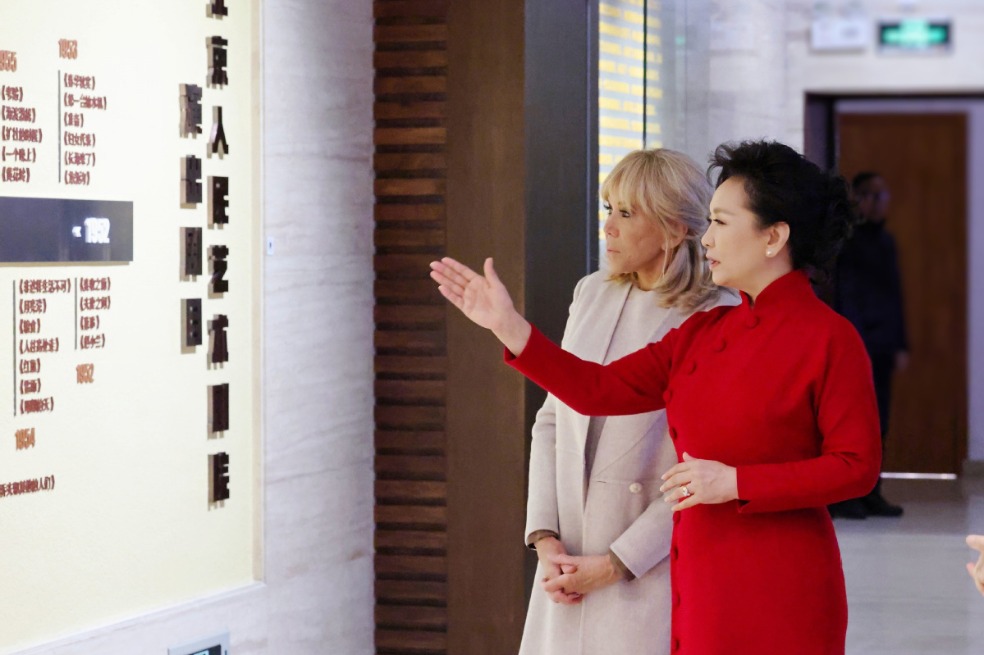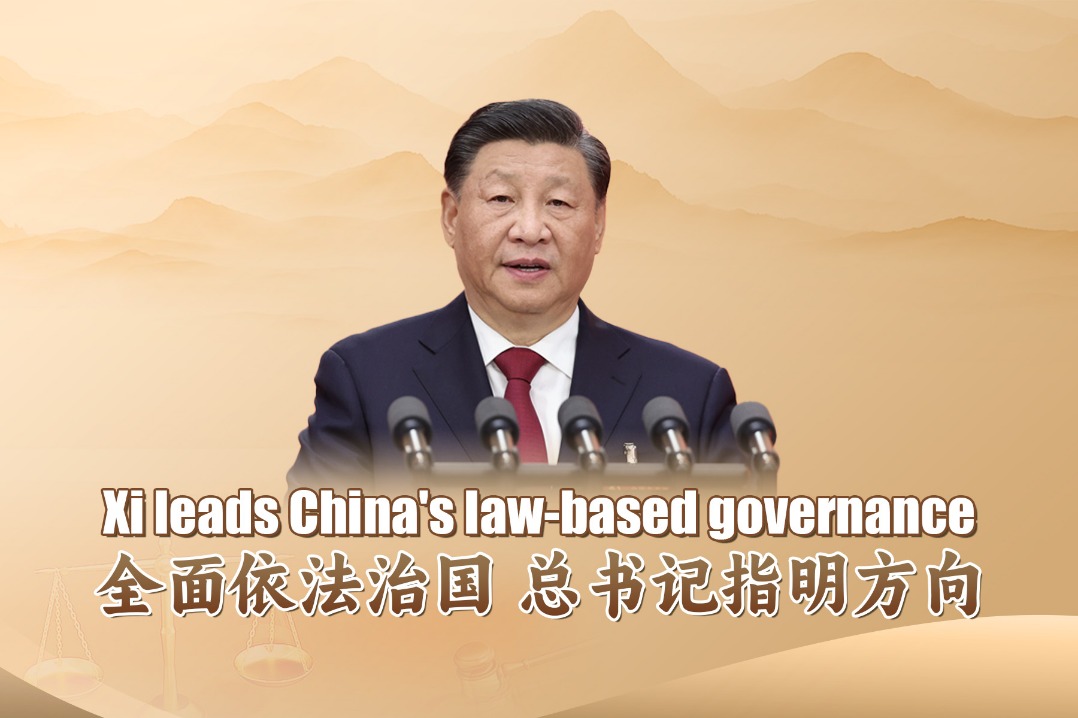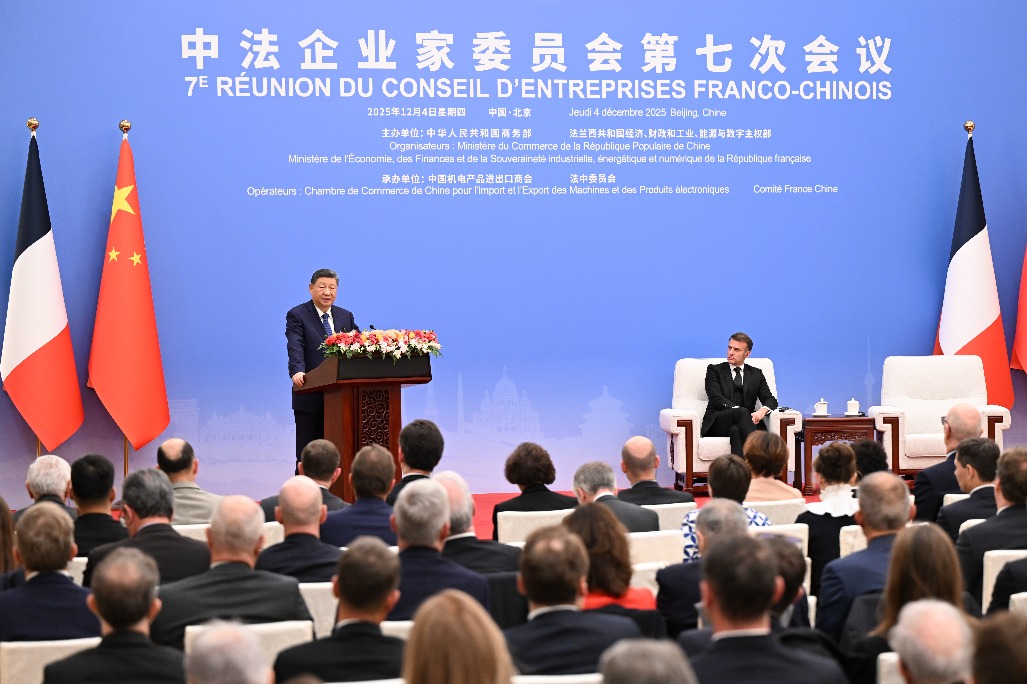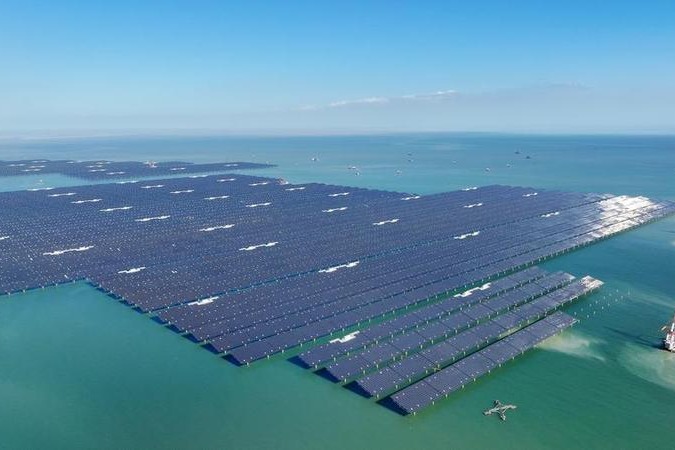Premium brands bouncing back after growth shocks
Younger shoppers from China to lead recovery in demand

Long lines outside glittering boutiques like Chanel and Gucci are back in China.
Everyday, crowds gathering behind the velvet ropes have caught sales assistants off guard.
"I've been working literally around the clock since May," said Michael, a sales representative at French luxury house Louis Vuitton in Shanghai who was unwilling to provide his surname.
"People flock to the stores, normally popping very specific questions like-Do you have 'On the Go' (a handbag model)? And they leave with stuffed shopping bags."
The global luxury market was arguably among the hardest hit amid the novel coronavirus pandemic, which left countless people stuck at home, including the over 100 million Chinese travelers that luxury houses deem as their "best clientele".
International luxury companies have expected social distancing to take a heavy toll on their business. After all, more than two-thirds of the $106 billion that Chinese consumers spent on luxury purchases last year took place abroad, said consultancy Bain& Co.
But the outbound travel restrictions could well represent a silver lining for the long lackluster domestic market, which in recent months saw the Chinese splurging big as lockdowns and travel restrictions stimulated their appetites for some luxury products.
Upscale cosmetic group Estee Lauder has attributed its gradual recovery from COVID-19 primarily to the remarkable rebound in China.
In fiscal year 2020 ending June, the owner of Estee Lauder-Tom Ford and MAC brands-netted double-digit growth in China on almost every channel (with online sales at the forefront) and across all product categories for almost every brand, the company reported in late August.
"Net sales in the Chinese mainland where restrictions were lifted first saw strong double-digit growth year-over-year during the fourth quarter of fiscal 2020," the company said in a news release, where President and Chief Executive Officer Fabrizio Freda highlighted the vibrancy of the Asia-Pacific region, led by China, in navigating market uncertainties in the coming year.
Dispelling concerns, luxury skin care brands like La Mer also recorded double-digit growth on the Chinese mainland, whose iconic facial cream was priced at a somewhat prohibitive 2,500 yuan ($370) for 60 milliliters.
Online sales made up over 40 percent of Estee Lauder's total sales for the fiscal year, and growth in China was partially driven by successful programs during key shopping moments, such as the 618 Midyear Shopping Festival-but also by targeted and expanded consumer reach. Despite the curtailed travel retail section, its domestic travel consumption in China remained stable.
Likewise, sales in China for most of LVMH's brands turned positive compared with a year ago in the second half of March, said Jean-Jacques Guiony, chief financial officer of LVMH Group, which saw "very high growth rates" in the country in April for some of its products.
"Sometimes in excess of 50 percent," Guiony told The Wall Street Journal in an earlier interview. "It really shows the appetite of Chinese people has come back to previous patterns of consumption."
Xue Jingli, chairman of Consinee Group, China's largest exporter of cashmere yarn, agreed that global luxury brands see China bucking the overall gloomy trend.
"When I talk to our foreign partners, they report China to be among the very few (if not the only) markets where sales are gradually picking up after the COVID-related closures," said Xue, whose company sources for top-tier fashion brands from Hugo Boss and Max Mara.
"It's unsurprising to see a gradual pickup of the luxury market in China because people simply lack the conventional channels they normally turn to for luxury purchases, such as duty-free shops and outbound trips," said Peng Yanyan, head of the China consumer sector at UBS Securities, which remained rosy about the sector's performance in the country.
"As overall disposable incomes rise, notably for the well-off population, luxury products are 'a must have'," she said. "So the novel coronavirus has simply impeded supply in the short run, but demand is always here to stay."
In light of the booming demand, brands not only attract shoppers with a variety of tantalizing entry prices, but also ramp up prices on more luxurious and iconic offerings.
Wang Xiaohui, 33, a graphic designer in Shanghai, said her anxiety of not being able to secure a Chanel chain handbag has been exacerbated after reading numerous posts on Chanel's shopping craze in China's major cities documented by her peers on social commerce platform Xiaohongshu.
"One (Xiaohongshu user) said she waited for almost an hour to get inside the store. The other said four customers were 'competing' for one bag. A third said a new round of price hikes is expected soon," she said. "It just makes me want to get a bag badly."
The digital-savvy Chinese often hear of alleged price hikes from surrogate shoppers, better known as daigou in Chinese, who warn clients of the potential increases via social media sites.
"Even our company has not officially confirmed another round of price hikes. But I personally came across such information on Xiaohongshu," said Michael, the sales representative from LVMH, which has seen upward price adjustments in March and May consecutively.
Fashion houses raised prices for some of their most coveted products as they seek to make up for sales impaired by novel coronavirus lockdowns, especially as a lot of the mature markets have yet to see large-scale business normalcy.
Luca Solca, a luxury goods analyst at Bernstein, said, "It's a strategy to defend margins." But not all labels could follow that route because it could trigger backlash from consumers and pose a question on the sustainability of such an approach.
"There are always limits to how many times prices can go up, and once international travel resumes, this cannot last," Solca said.
"There is a possibility this year of getting away with it a little bit more," Francesca Di Pasquantonio, managing director of equity research at Deutsche Bank, told Vogue Business. "This year, Chinese consumers won't travel to Japan or to France. Next year, they might be able to."
Bain projected China to lead the way toward a recovery and Chinese consumers are set to cement their status as crucial drivers of the industry, accounting for nearly 50 percent of the market by 2025.
"There will be a recovery for the luxury market but the industry will be profoundly transformed," said Claudia D'Arpizio, a Bain & Co partner who led a research report on the luxury market post-COVID. "The novel coronavirus crisis will force the industry to think more creatively and innovate even faster to meet a host of new consumer demand and channel constraints."
Many are turning to online channels, which are expected to claim 30 percent of the market by 2025. This goes hand in hand with the younger generations (Generation Y and Z) becoming the backbone of the market.
Burberry has been promoting online-to-offline commerce by opening in July the first-of-its-kind social retail store in Shenzhen, Guangdong province. The London-based fashion hub says it blends physical and social worlds with a suite of digital technologies powered by Chinese internet giant Tencent.
Like many other brands, Burberry saw the Chinese mainland registering mid-teen growth in the first quarter but has jumped ahead of the January pre-COVID-19 level of 30 percent in June.
"Travel restrictions caused by the contagion have to some extent fueled local consumption of luxuries," said Josie Zhang, president of Burberry China.
"To harness mid-to-long-term growth here in China, it's critical for us to reach out to new customers, build connections and stay agile in digitally innovative ways."
Through a dedicated mini program backed by WeChat, Tencent's iconic messaging app, customers can unlock exclusive content on the brand and personalized experiences, and then share with their communities.
The mini program is designed as a digital companion. As long as customers walk into the store, they stand to access features such as store tours and product information. It also offers access to dedicated client services, in-store appointment bookings, events and table reservations in the in-store cafe.
Zhang said initiatives like these are aimed at capturing a growing penchant for social interactions and community building among the younger generation of shoppers, who are typically free-spenders looking for "spiritual resonance" in luxury brands. When customers put the contagion behind them, the way they see the world will have changed and luxury brands will need to adapt, said Bain partner Federica Levato.
"Safety in stores will be mandatory, paired with the magic of the luxury experience-creative ways to attract customers to stores, or to get products to customers, will make the difference."
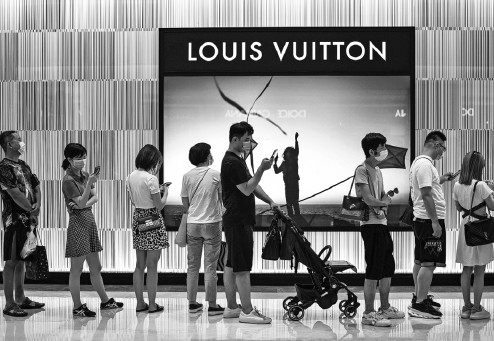
Today's Top News
- Tokyo urged to specify its past commitments
- Cooperation conducive to steadying progress in China-France partnership: China Daily editorial
- Shenzhou XXI crew set for first extravehicular activities
- Xi, Macron attend China-France Business Council meeting
- China expected to prioritize boosting consumption and domestic demand in 2026, expert says
- Xi, Macron jointly meet press
















